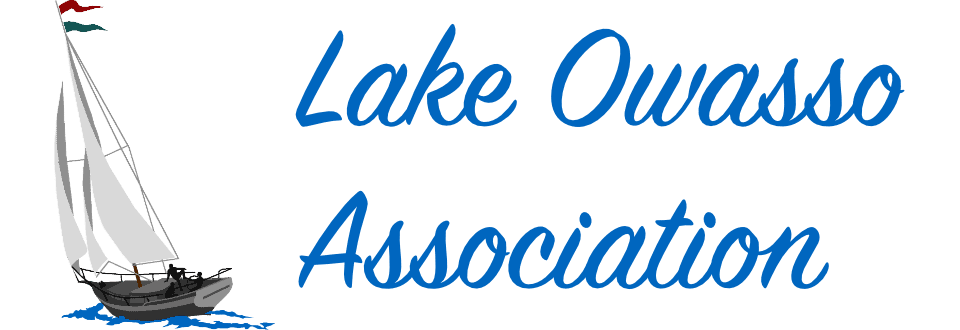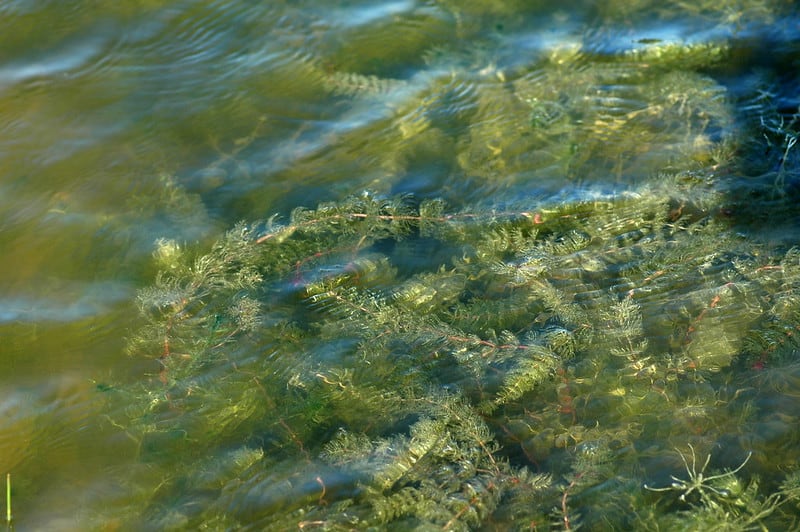In 2025, Lake Management, Inc (LMI) was contracted by The Lake Owasso Association (LOA), to provide aquatic vegetation control services. Minnesota Department of Natural Resources (DNR) issued permits 16F-3A965, 2025-1723, 2025-2260 allowing for a combined 24.69 acres of shoreline control. An additional 8.9 acres was allotted for Eurasian milfoil (EWM) control under permit 2022-1986.
LMI based first application timing on plant development. Shoreline applications occurred on 6-10-25 for 169 individual homeowners. The invasive species curly-leaf pondweed (CLP) was targeted when present, along with slender naiad, large-leaf pondweed, elodea, algae, and minor amounts of other native aquatic vegetation species. Flumioxazin, diquat and algaecides were applied to approximately 7,681 shoreline feet. Thirteen properties received lily control, as allowed by permit, using carfentrazone.
LMI performs inspections on Lake Owasso and with the information gathered, makes treatment recommendations to the LOA. Under the 2025 DNR permit, individuals may receive up to two applications for nuisance aquatic vegetation control. Following inspections and based on homeowner and LOA input, secondary applications were made on 7-24-25 and 8-11-25. Footage for the 73 homeowners totaled 3,222 feet. The 7-24-25 application focused on large-leaf pondweed with smaller amounts of naiad, elodea, algae, etc.
On 8-11-25, LMI performed 8.9 acres of EWM control in three areas. Areas were selected based on aquatic survey showing trace amounts of EWM in shallow water (<4′) located in the very SSW portion of the lake. The 8-11-25 application used triclopyr with the goal of controlling any EWM present.
Summary
The 2024 whole lake fluridone application was successful in eliminating greater than 99% of EWM mass. In 2025, surveys found trace EWM in several shallow areas in the SSW portion of Lake Owasso. It is hypothesized that photodegradation of fluridone in very shallow areas limited control. Based on the EWM survey, MN DNR permit 2022-1986 was issued for three sites totaling 8.9 acres which were treated with triclopyr on 8-11-25. The adjacent participating homeowner shoreline was sprayed on the same day using triclopyr.
In 2025, native aquatic vegetation, previously unable to compete with EWM, expanded in frequency. While native aquatic vegetation may interfere with recreation, most common species do not form dense surface mats. Relief from native vegetation can most often be addressed with individual shoreline controls. Unlike many lakes with widespread EWM growth, Lake Owasso continues to have a diverse population of native aquatic species.
Large-leaf pondweed saw the greatest increase in 2025. This was a similar occurrence in neighboring lakes, including Lake Josephine. It is assumed ideal conditions and lack of competition allowed for significant expansion in 2025. Flatstem pondweed (also a native) increased significantly, but also does not surface mat and thus does not pose a navigational hinderance like EWM. Also most flatstem pondweed is located in the central portion of the lake where the treatment allowance is less. Other native species (elodea, naiad, etc.) saw more limited expansion of frequency and density.
The invasive curly-leaf pondweed (CLP) increased moderately in 2025. CLP is an early season, dense canopy, mat forming plant that has been identified in Lake Owasso for 40+ years. Expansion may be limited in lakes due to many environmental factors. CLP is more frequent/dense in the north basin of Lake Owasso but has not posed the recreational interference of EWM. Due to the time needed from application to issuance, CLP control permits may be applied for in early 2026, as a precautionary measure.
LMI recommends continued surveys allowing for rapid response to pioneering infestations of EWM. In 2026, alternate product selection may again be beneficial for areas with greater frequency of large-leaf pondweed. CLP should be surveyed shortly after ice-out and monitored for possible expansion.
Lake Management, Inc
10400 185th St N
Marine on St Croix, MN 55047

